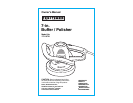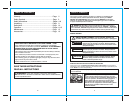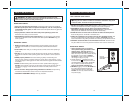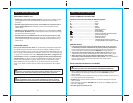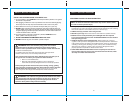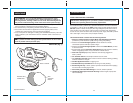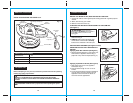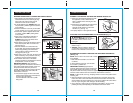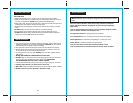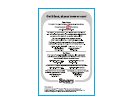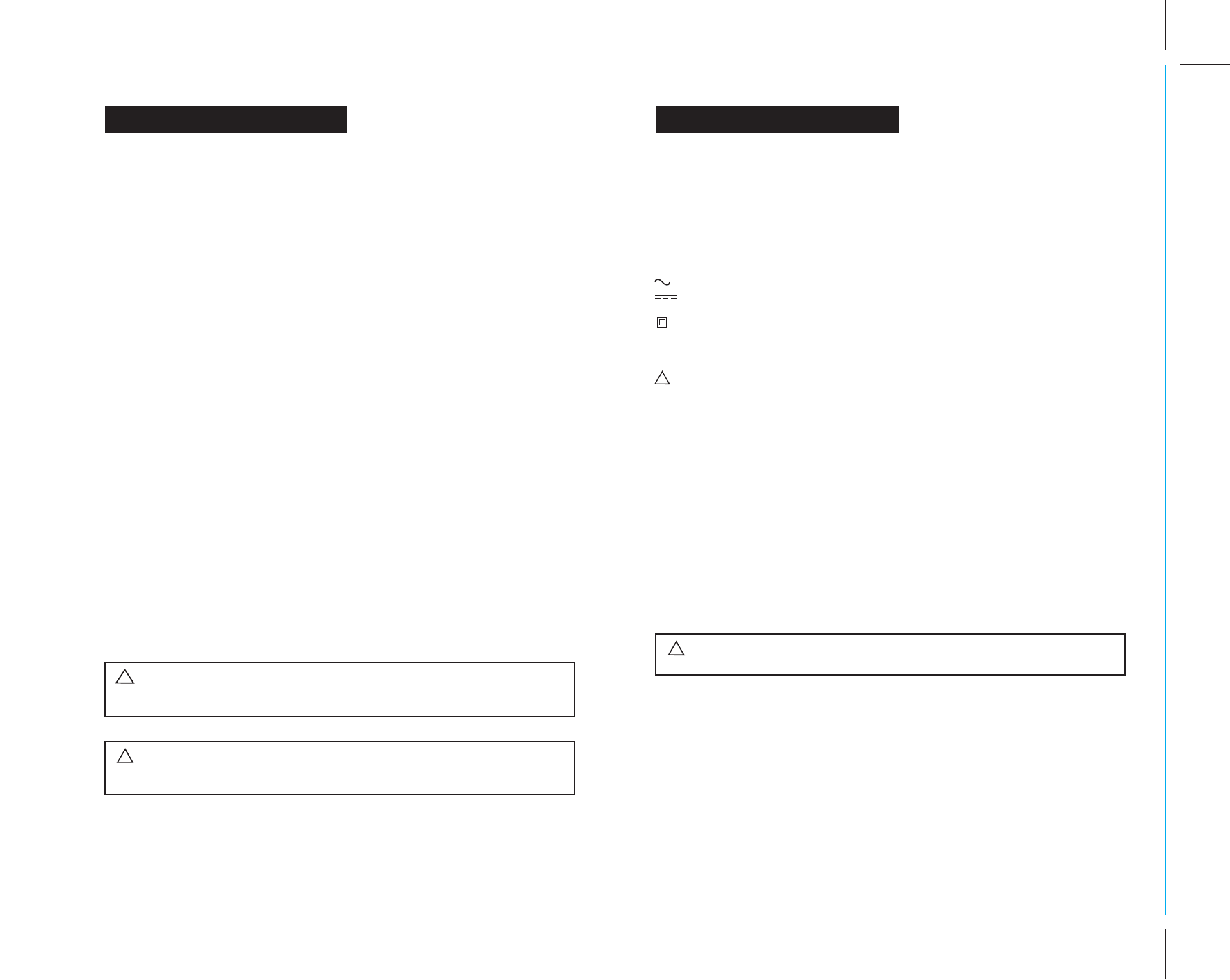
SAFETY INSTRUCTIONS cont.
6 7
WARNING:
Check extension cords before each use. If damaged
replace immediately. Never use tool with a damaged cord since touching
the damaged area could cause electrical shock, resulting in serious injury.
!
4. AVOID body contact with grounded surfaces, such as pipes, radiators, ranges
and refrigerators. There is an increased risk of electric shock if your body is
grounded.
5. DO NOT expose power tools to rain or wet conditions or use power tools in
wet or damp locations. Water entering a power tool will increase the risk of
electric shock.
6. INSPECT tool cords for damage. Have damaged tool cords repaired at a Sears
Service Center. BE SURE to stay constantly aware of the cord location and keep
it well away from the moving blade.
7. DO NOT abuse the cord. NEVER use the cord to carry the tool by or to pull
the plug from the outlet. Keep cord away from heat, oil, sharp edges or moving
parts. Replace damaged cords immediately. Damaged cords increase the risk of
electric shock.
ELECTRICAL SAFETY cont.
EXTENSION CORDS
Use a proper extension cord. ONLY use cords listed by Underwriters Laboratories
(UL). Other extension cords can cause a drop in line voltage, resulting in a loss of
power and overheating of tool. For this tool an AWG (American Wire Gauge) size of a
least 14-gauge is recommended for an extension cord of 25 - ft. or less in length. Use
12-gauge for an extension cord of 50-ft. Extension cords 100-ft. or longer are not
recommended. Remember, a smaller wire gauge size has greater capacity than
a larger number (14-gauge wire has more capacity than 16-gauge wire; 12-gauge
wire has more capacity than 14-gauge). When in doubt use the smaller number.
When operating a power tool outdoors, use an outdoor extension cord marked
“W-A” or “W”. These cords are rated for outdoor use and reduce the risk of electric
shock.
!
CAUTION:
Keep the extension cord clear of the working area.
Position the cord so that it will not get caught on lumber, tools, parts of the
vehicle or other obstructions while you are working with a power tool.
SAFETY INSTRUCTIONS cont.
SERVICE SAFETY
1. If any part of this tool is missing or should break, bend, or fail in any way;
or should any electrical component fail to perform properly: SHUT OFF the
power switch and remove the tool’s plug from the power source and have the
missing, damaged or failed parts replaced BEFORE resuming operation.
2. Tool service must be performed only at a Sears Service Center. Service or
maintenance performed by unqualified personnel could result in a risk of injury.
3. When servicing a tool, use only identical replacement parts. Follow
instructions in the maintenance section of this manual. Use of unauthorized
parts or failure to follow maintenance instructions may create a risk of
electric shock or injury.
SAFETY RULES FOR BUFFER / POLISHERS
1. Read, understand and follow all safety rules and user instructions in this manual
and all directions and warnings on polishes and waxes BEFORE using this
buffer / polisher.
2. Vehicle should be clean and dry before using your buffer polisher. Remove all road
tar, excess grease spots and bug stains.
3. ALWAYS make sure the vehicle’s surface is cool before washing and using the
buffer / polisher.
4. When changing accessories, BE SURE that the switch is in the OFF position and
the cord is unplugged.
5. DO NOT apply wax directly on car.
SAFETY SYMBOLS FOR YOUR TOOL
WARNING:
USE OF ACCESSORIES THAT ARE NOT RECOMMENDED
FOR USE WITH THIS TOOL MAY CREATE A HAZARDOUS CONDITION.
!
V.......................................................................Volts
A......................................................................Amps
Hz....................................................................Hertz
W.....................................................................Watts
min..................................................................Minutes
....................................................................Alternating current
..................................................................Direct current
n
o
....................................................................No-load speed
....................................................................Class II construction, Double Insulated
RPM………………………............................. . .Revolutions per minute
SPM…...........................…………………….....Strokes per minute
OPM………………..........................………..... Orbits per minute
....................................................................Indicates danger, warning or caution.
It means attention! Your safety is involved.
The label on your tool may include the following symbols.
!



